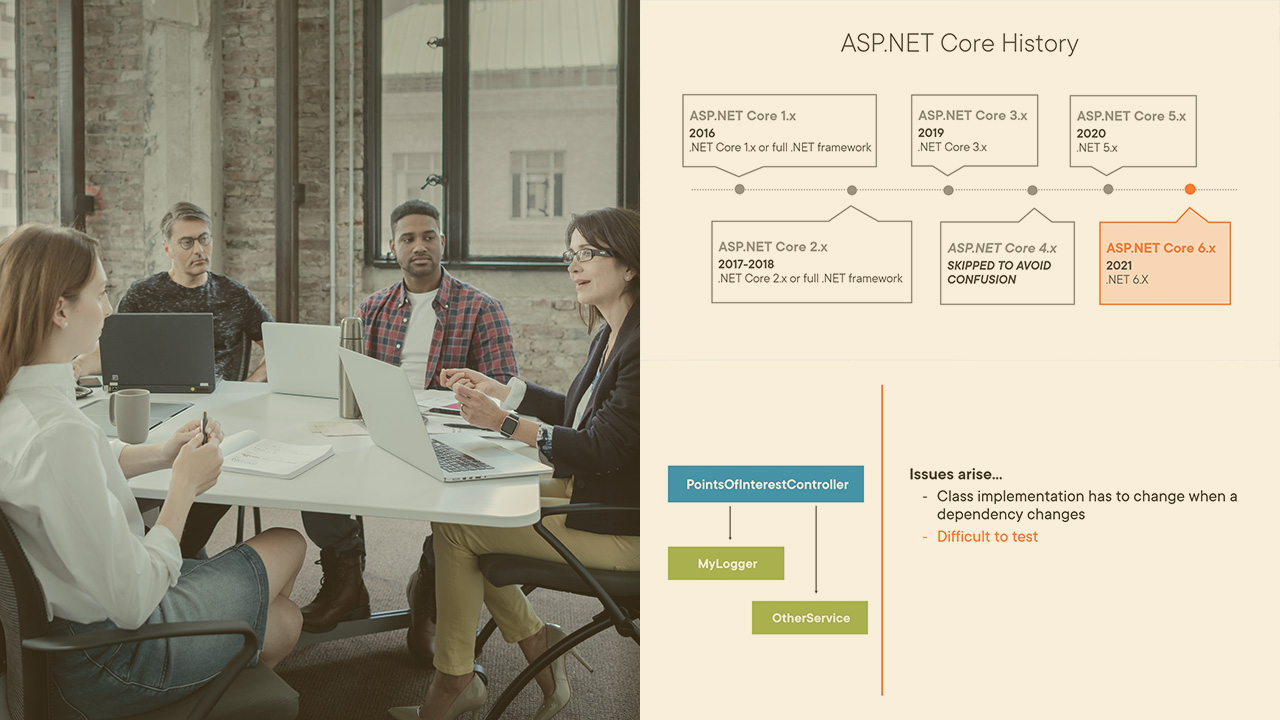- Course
ASP.NET Core Web API Fundamentals
In this course, you'll learn how to build an API with ASP.NET Core that connects to a database via Entity Framework Core from scratch.

- Course
ASP.NET Core Web API Fundamentals
In this course, you'll learn how to build an API with ASP.NET Core that connects to a database via Entity Framework Core from scratch.
Get started today
Access this course and other top-rated tech content with one of our business plans.
Try this course for free
Access this course and other top-rated tech content with one of our individual plans.
This course is included in the libraries shown below:
- Core Tech
What you'll learn
ASP.NET Core is a great platform for building APIs with. In this course, ASP.NET Core Web API Fundamentals, you'll learn how to build an API with ASP.NET Core that connects to a database via Entity Framework Core. First, you’ll learn how to get started with API building in ASP.NET Core. Next, you’ll discover how to get and manipulate data from services, use the built-in dependency injection system, and work with configuration files. Finally, you’ll learn how to connect to a database through Entity Framework Core and how to document your API. When you’re finished with this course, you will be able to build an API from scratch with ASP.NET Core.
ASP.NET Core Web API Fundamentals
-
Coming Up | 1m 24s
-
About the Course Structure | 3m 59s
-
Course Prerequisites | 23s
-
Frameworks and Tooling | 3m 53s
-
ASP.NET Core: The Big Picture | 4m 8s
-
Approaches to Building APIs with ASP.NET Core | 1m 57s
-
Demo: Creating and Running a New ASP.NET Core Project | 9m 48s
-
Demo: Running an ASP.NET Core Project Using the CLI | 3m 10s
-
Demo: Inspecting the ASP.NET Core API Project Code Structure | 7m 2s
-
The ASP.NET Core Request Pipeline & Middleware | 1m 56s
-
Demo: Configuring the ASP.NET Core Request Pipeline | 2m 31s
-
Demo: Working with Different Environments | 3m 36s
